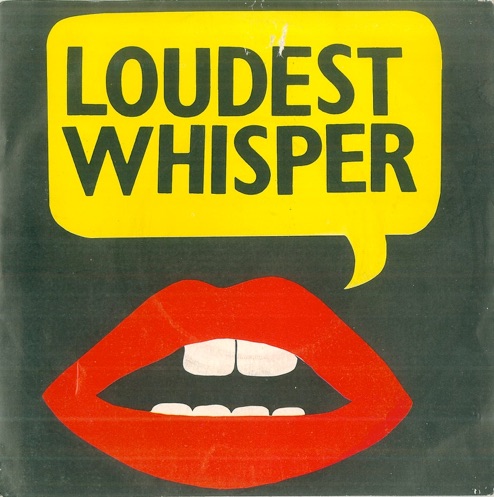“A Band that has consistently produced fine and passionate music over the years and captured the imagination of collectors world wide”. Record Collector
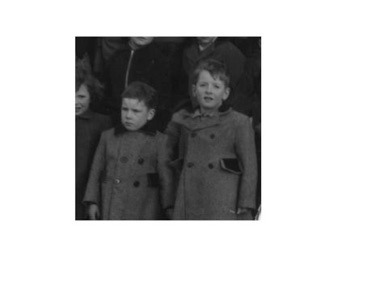
In many ways Loudest Whisper could be called the O'Reilly Brothers Band, as Brian and Paud O'Reilly have been the cornerstone on which the Loudest Whisper legacy has been built. Always innovative the O'Reilly brothers demonstrate their creativity whether working on their Operatic scale stage productions like "The Children of Lir" and “Buskin” or the solid Folk/Rock/blues band, we know today as Loudest Whisper.
The following are the sleeve notes by Richard Falk from Loudest Whisper’s deluxe 6CD box set ‘Magic Carpet’ on Sunbeam Records.
Richard is a leading international record collector and co-author of 4001 Record Collector Dreams
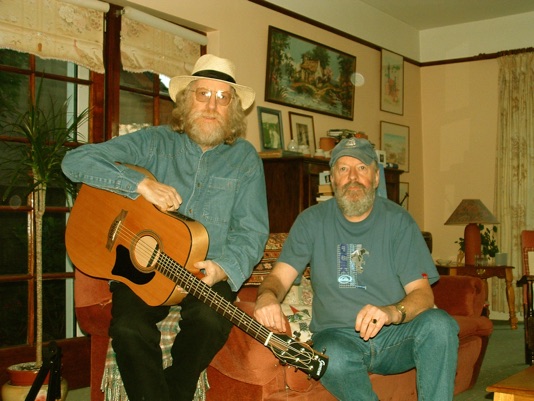
Brian and
Paud.
Early 50’s
In 2008, Loudest Whisper is 40. The clichés about “life beginning at…” are extremely appropriate, since the band has some very exciting plans for the future, including a major re-staging of The Children of Lir as a Celtic Opera and plans to tour more in Europe, where they are building up a strong following. But to understand where Brian O’ Reilly and his colleagues are today, first we need to consider where they’ve come from.
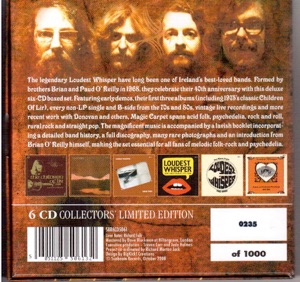
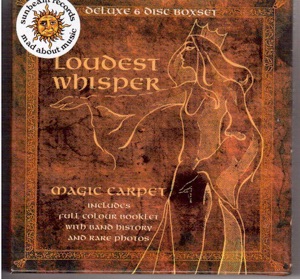
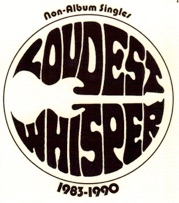
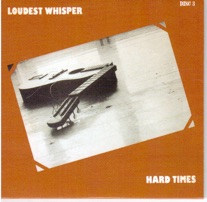
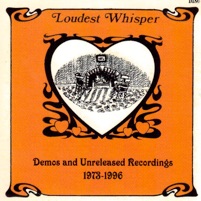
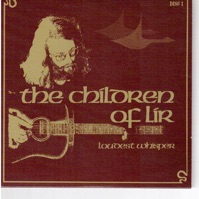
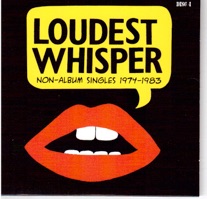
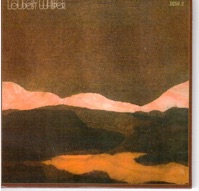
The band was formed in the sleepy surroundings of Fermoy, County Cork, in the early 1960s as a beat group called the Wizards. Featuring Brian O’ Reilly and Michael Clancy on vocals and guitars, John Aherne on vocals and bass and Jimmy Cotter on vocals and from Elvis Presley, Buddy Holly and the Everley Brothers to Bob Dylan, the Byrds and Peter, Paul & Mary, and consisted of “banging on chairs and playing acoustic guitars” according to Brian. Indeed, electric guitars and amplifiers didn’t reach Fermoy until the mid-sixties.

The wizards, CYMS Hop, Christmas 1964
Back then, local attitudes were nothing if not parochial: Brian wryly notes that “in traditional sessions in those days, there weren’t really guitarists involved – that crept in slowly”. The Wizards were not really a folk group, though, with a repertoire largely consisting of Beatles, Rolling Stones and Spencer Davis covers. Like many other underground bands, their music took a heavier turn in the late sixties, when they discovered The Doors, Jimi Hendrix, Cream and the blues. Around the same time, long-time fan Brendan “Bunny” Neligan joined the band, later taking over the drum stool when Jimmy Cotter left to begin a new life in Dublin (“which for us, might as well have been a foreign country” says Brian).
The new line-up and new sounds deserved a new name, and Brian recalls that “we all jumped on the idea, because Loudest Whisper represented both aspects of our music: the folky and the heavy. We then realised that there was a film with a similar title – so it wasn’t directly inspired by the film.”
Brian’s brother Paud subsequently joined as a guitarist, before switching to drums, freeing Brendan Neligan to become lead vocalist. By this time, Brian had amassed a considerable repertoire of original songs, taking most of his influences from American folk/rock outfits such as the Mamas and the Papas, Joni Mitchell, the Lovin’ Spoonful and John Sebastian. He’d also developed a strong interest in stage musicals, having appeared in amateur performances of The White Horse Inn and Hello Dolly among others. These influences fused with his increasing interest in Irish folk music and folklore to sow the seeds of an ambitious conceptual work that became The Children of Lir.
The song suite based around the ancient legend of the Irish King Lir and his doomed children, who are fated to live as swans. “The children were allowed to retain human voices because of the beauty of their singing,” explains Brian, “so to me, the legend of Lir was a great story about the power of music, and was crying out to become a musical”. Rehearsals for the show began midway through 1972, and The Children of Lir enjoyed its première in Fermoy on January 7th 1973. The lead role was given to the band’s latest recruit, a fine singer and guitarist named Ron Kavanagh, and they were joined by around fifty other performers for a truly epic staging. “We wanted a lovely, folksy acoustic guitar sound,” says Brian, “hence we had no fewer than five guitarists in the line-up. Probably just as well, given the lack of microphones!” .
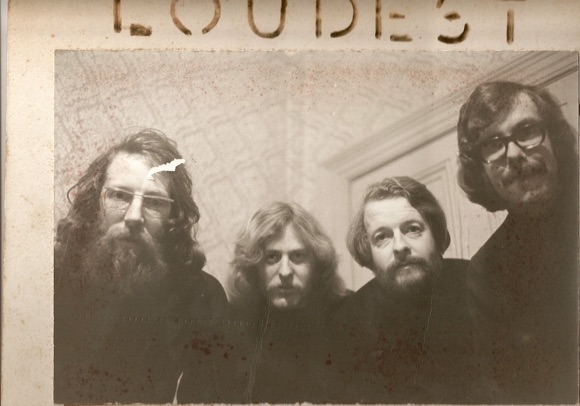
The quality and scale of the performances far exceeded anyone’s expectations, and word quickly spread well beyond Fermoy. Ireland’s national TV channel RTÉ shot a ten-minute feature (comprising a synopsis of the show and three songs), which was screened on the prime time show Tangents, just after the news. Brian O’ Reilly was now a nationally known name, and The Children of Lir moved on to Limerick and Mullingar.
This exposure assisted Loudest Whisper in securing a record deal with the Irish branch of Polydor. At the behest of a local entrepreneur and for a princely £56, they had already recorded a beautiful song of Brian’s about William Butler Yeats, William B, but the planned 45 had never appeared. They therefore re-recorded it in Dublin with a much larger budget, following which Brian, flushed with the success of Lir, completed another stage musical, Perseus, with a remarkable vocalist named Geraldine Dorgan in the lead role.
At Polydor’s request, the band returned to the studio in early 1974 to prepare an album version of The Children of Lir, with Tir na nÓg’s Leo O’ Kelly in the producer’s chair. However, singer and guitarist Ron Kavanagh, who had worked with the band during the early seventies, was present on one song only, as he left shortly before the sessions began. “Polydor put us together with Leo,” Brian remembers. “We weren’t old friends, but he was the right producer for us, as he’d come from the same melting pot. I still occasionally see him today, at festivals and so on.” With Kavanagh gone, lead vocal parts for the album were covered by Brian, Brendan and Geraldine, and the band’s sound was fleshed out by a string quartet and a choir.
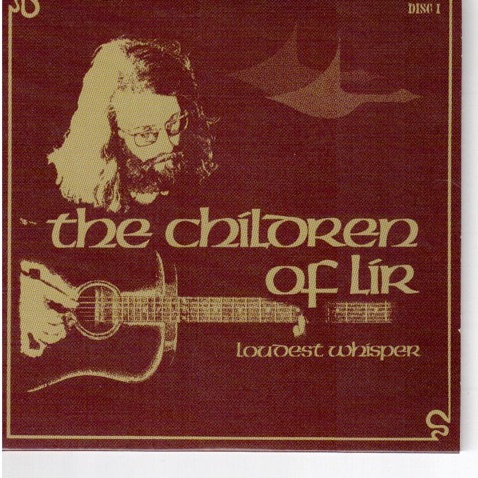
“We recorded it at the weekend, as we all had day jobs,” Brian remembers. “We’d go up to Dublin on a Saturday morning – quite a long journey, too – and get as much done as we could. The music was done first, then the vocals. We got the whole choir up to sing their parts, too – first the boys, then the girls. It was only a small studio, filled with thirty singers! It was also the first time I had worked with a string quartet, which was a valuable experience.”
However, Brendan Neligan has more mixed memories of his time in the studio. “Recording Children of Lir was hard work, week in, week out – long days in a place without windows. But I did enjoy the experience of recording, as it was my first time and I was new to all of it.” Brendan was less enamoured of the band’s new, folkier direction, though, preferring their rock and R&B roots, and left a few months afterwards. He went on to play with quite a number of different bands, but none of these outfits recorded.
With Perseus enjoying an extremely warm reception, and a single and album ready for release, Loudest Whisper seemed set for the big time. Things were not to go so smoothly, though. First, when Polydor Ireland’s MD presented the tapes of The Children of Lir to his British counterpart, he was met by complete indifference. As Brian ruefully puts it, “when the UK branch of Polydor rejected it, enthusiasm in Ireland melted away too. It was very disappointing.”
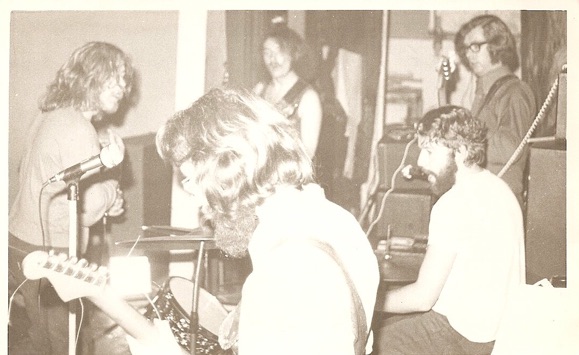
Secondly, RTÉ managed to lose the only copy of a 20-minute special about Perseus before it could be screened. Thirdly, and very seriously, William B ran into copyright problems when Yeats’s estate objected to its quotations from The Stolen Child. The track had to be swiftly rewritten and re-recorded, before being issued (backed by False Prophets) as Loudest Whisper’s début single in 1974, complete with a very rare picture sleeve designed by Gail Mellerick and Frank Dowling, art students who would also create the Children of Lir album cover.
William B was not a hit, and The Children of Lir gained only a very low-key release – rumour has it that just 500 copies were pressed. No expense was spared on the packaging, however: the album came in a beautiful textured crimson and gold sleeve, complete with a lyric booklet. The cover has proved less than durable over the years, however, with most surviving examples suffering from severe fading and ringwear, thus ensuring that mint copies command enormous prices.

The album certainly doesn’t owe its value solely to its scarcity, though. A masterpiece of mystical progressive folk, it combines an extremely eerie and haunting atmosphere with superb musicianship. Highlights include the classically-influenced Overture, the stunning Wedding Song (combining a spine-tingling lead vocal from Geraldine and the inventive Manannan 2, which blended a children’s choir with hard rock backing to unique effect.
Like many gems of its period, The Children of Lir has gained an almost mythical status over the years, and is now arguably the most sought-after album ever issued in Ireland. It finally gained a CD release on Kissing Spell in the mid-nineties, without its original artwork (which was replaced by a painting of some swans), but gaining three bonus tracks. A subsequent vinyl issue was more faithful to the original, whilst a Korean CD combined the original artwork with the British CD’s extra cuts.
Following the album’s release, Brian asked Geraldine Dorgan to join as a full-time member. More than three decades on, they both vividly recall the circumstances in which it happened. “I’d just completed my school leaving certificate,” says Geraldine, “and apart from guesting on The Children of Lir I’d never recorded before, but I’d sung quite a bit and studied piano at school. Anyway, I was walking down the street, and Brian was driving along in his Morris Minor, and he stopped me and asked me to join. I was a bit taken aback, and told him I’d have to speak to my mother first!” .
Among the bonus tracks was the mesmerising Silent O’ Moyle, widely considered Loudest Whisper’s finest-ever recording, combining Geraldine’s magnificent vocals with some chiming, multi-layered guitars. “I was very excited when Brian wrote and arranged that,” recalls Geraldine. “I sang the lead vocal for it and Brian provided a high harmony over that. I was an alto, but seemed to be able to reach some very high notes for that track! I remember that we performed it live at the Embankment in Tallow and it went down so well.”
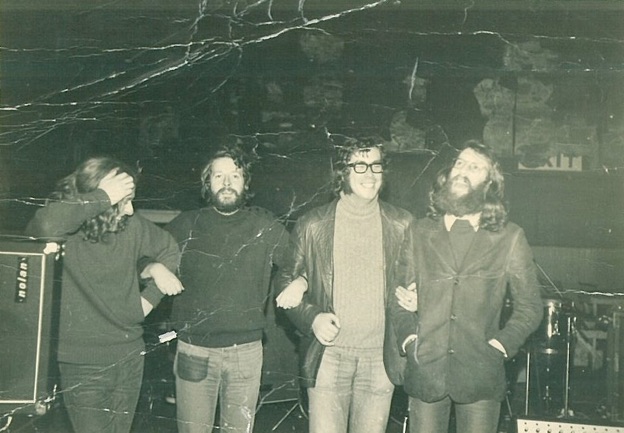
The late seventies saw Brian concentrating on the building of his own studio, Fiona. “This was a huge project, and it began in 1978, as a partnership with a local musician who owned a music shop. I just wanted to set up something to record my demo tapes, but this guy suggested making it a commercial operation – a local answer to the big studios in Dublin. In fact, it was one of the few 16 track studios outside Dublin at the time.”
In fact, Brian had a considerable amount on his plate – running the band, preparing the studio and undertaking his day job as a laboratory technician at the local agricultural institute. However, the studio was complete by 1979, and its creation was celebrated in the very catchy new single Magic Carpet, which told the story of the band’s development to date.
A second album, simply entitled Loudest Whisper, appeared on Polydor in 1980, and at the label’s insistence included a number of older singles, stretching back to You And I in 1976. Musically, it had much more of a transatlantic flavour, with notable rural rock influences – Brian originally wanted an American producer for authenticity, but Polydor demurred, and he ended up producing the album himself.
Among the LP’s highlights was a re-recording of Cold Winds Blow from The Children Of Lir, with vocals shared between Brian and Geraldine. “We were playing it live at the time,” says Brian, “and many people felt that song really represented Lir, so it seemed a great idea”. On the original vinyl, the song provided an outstanding final track to a very accomplished album, but the Kissing Spell reissue (besides retitling the album 2 and substituting a hideous new cover) bizarrely jumbled up the running order, with the original opening cut Nightime In The City now ending the disc.
Also of note was The Name Of The Game, a rare songwriting collaboration between the O’ Reilly brothers. With the full song running for eight and a half minutes, the track was split over both sides of a 45, with only part one being included on the album. “It was written about the events in Afghanistan,” says Paud. “The Russians boycotted the Olympics as a result of that. Their athletes had trained for so long – night and day – and then they couldn’t compete.” This intriguing lyric was accompanied by a distinctly Russian-flavoured arrangement, with some very inventive use of bass backing vocals.
Throughout the late seventies and early eighties, the band experienced a number of line-up changes, with bassists Mike Russell and Chris Hurley coming and going, and another guitarist Mo O’ Connor participating – no-one can remember exactly when, but he definitely played the slide guitar on the band’s cover of Satisfaction (released as the B-side to Magic Carpet) and on the two live tracks included in this collection. Geraldine Dorgan also briefly left the band in 1978, returning when her first child was a year old.
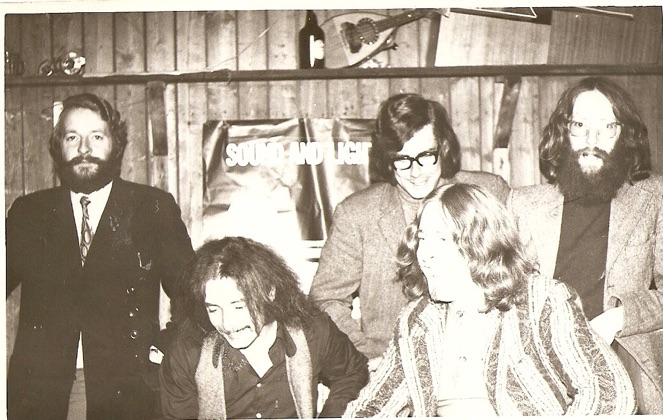
By the time the band cut its third album Hard Times, released at the end of 1982, Brian was playing the bass parts and sharing lead guitar with John McGrath. “He had a Fender guitar and a Fender amp,” notes Brian, “and he played very clean and fast. In fact, he sounded a lot like Mark Knopfler – although we hadn’t heard Mark Knopfler at that point.” The band had also added a second female singer, Bernadette Bowes, to expand its harmonies. “She complemented me very well,” Geraldine recalls, “as she had much more of a rock voice”.
Issued on the band’s own Fiona imprint, Hard Times offered a similar mix of rural rock and folk/rock to Loudest Whisper, and was once again a fine album. However, change was again in the air, with John McGrath, Bernadette Bowes and Geraldine Dorgan all leaving in the mid-eighties. The latter has since maintained close links with the band and frequently works with Brian in the studio, contributing harmony vocals to all subsequent Loudest Whisper projects. She also issued a solo album Song Collection on Fiona in 2000, with arrangements and production by Brian. Limited to just a couple of hundred copies, the album shows Geraldine in stunning vocal form, and for the first time demonstrates her considerable skills as a songwriter.

A new Loudest Whisper line-up quickly emerged, comprising the O’ Reilly brothers plus singer Orla Gowen, guitarist Ernie Touhig and Dutch bassist Harry Corneliusson. Around this time, Brian won the Castlebar Song Contest with his composition Spread Your Wings (issued as a Loudest Whisper single in 1984) and was working hard on a new musical entitled Buskin’. However, when Ernie Touhig suffered a serious accident, all band activities were placed on hold – “we should have made hay while the sun shone” Brian recalls ruefully.
Buskin’ went on to be a considerable success, being staged in Fermoy and Cork in 1985 and in Cork and London in 1986. The Everyman Theatre and Opera House were packed, and the band provided the rhythm section, with nine other musicians involved to provide an authentic swing sound. Orla Gowen had a major part in the show, and took the lead vocal on the extracted single Johnny Where Are You Now?.
Sadly, it proved impossible to take things to the next level, since there was no tax incentive in Ireland for anyone to invest in creative theatre or musical productions. “They’d happily put money into a racehorse, but wouldn’t go anywhere near a musical,” says Brian. “I met government ministers, the Department of Arts and lots of other important people, but it’s very difficult to get encouragement from bureaucrats.”
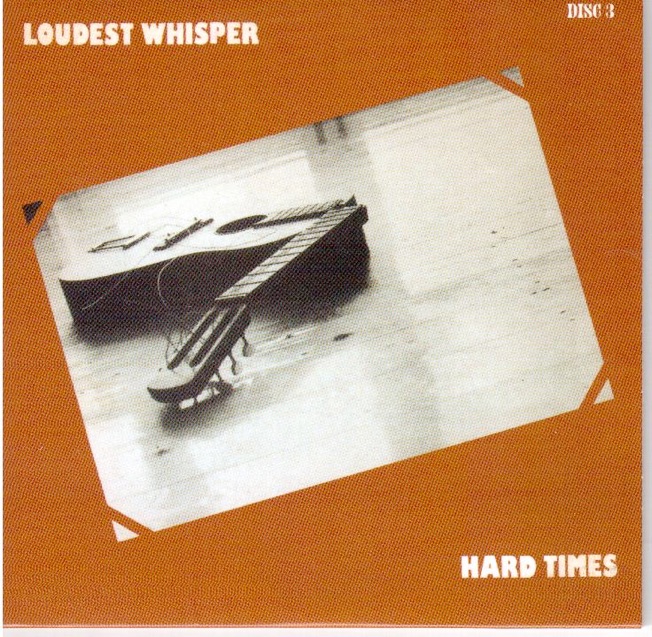
Line-up instabilities continued to dog the band, and Loudest Whisper regrouped as a quartet, with another set of brothers: Frank McClellan on vocals and guitar and Tom McClellan on bass. “I was getting used to the studio a bit,” says Brian, “and Frank was a great songwriter and singer. That’s why we featured him on Beat Of The Drum and a remake of Home” (issued as a cassette single in 1989). Meanwhile, 1990 saw the release of Brian’s first, and to date only, solo album, Spread Your Wings, rather strangely issued only on cassette.
By the early nineties, Tom McClellan had been replaced by Johnny Campbell, and it was this line-up that cut the fourth Loudest Whisper album The Collection. As its title suggested, this consisted of re-recordings of numbers from every phase of the band’s career. The band had recently signed a new deal with the Irish branch of K-Tel, but things quickly turned sour: in the same week the album was released, the label acquired a new managing director who was unwilling either to promote it or return the rights to the band. Consequently, The Collection languished in limbo for a few years, before getting a wider second issue on Fiona in 1995, sponsored by the Clonakilty Black Pudding Company. “That happened because the late Edward Twomey was a huge fan of Loudest Whisper and my musicals,” recalls Brian, “and he very kindly underwrote the second issue.”
Another blow was struck when Frank McClellan quit to pursue a solo career, deeply disappointing Brian, who had loved his voice and harmonies. The mid-nineties proved a quiet time for Loudest Whisper, with only two CD EPs appearing, neither containing any new compositions. This was mainly because Brian was concentrating on other projects.
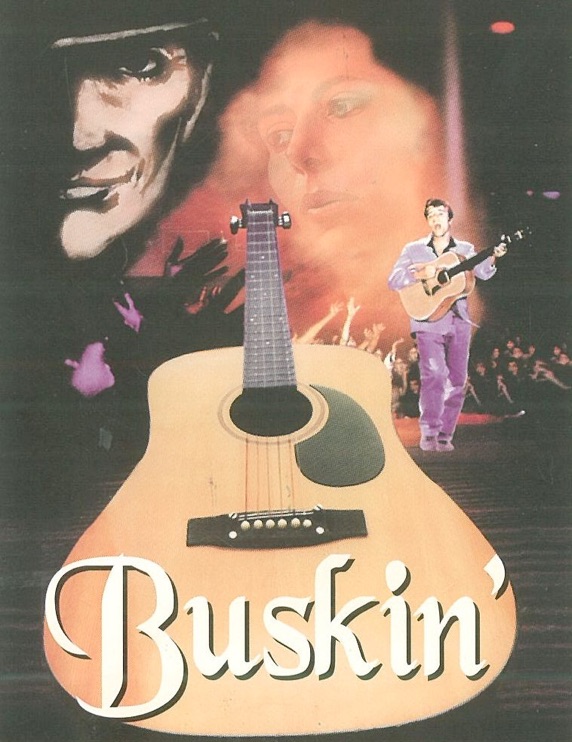
Chief amongst these was a radical reworking of The Children of Lir, inspired by the rekindling of interest in Celtic music. The musical backing this time around was more acoustic and folky, and the production was both staged and recorded, with the CD being credited to Brian O’ Reilly and Donovan. The addition of narrations between songs and three previously unrecorded compositions stretched the running time to 72 minutes, and the album has an impressive line-up of musicians, including Geraldine Dorgan, Ron Kavanagh, Brian’s son Oran on bass and the Irish Chamber Orchestra. Around the same time, Buskin’ was also restaged, again with considerable success.
In 1996, Oran O’ Reilly’s solo album A New Tomorrow followed. A concept album with a strong ecological theme and a huge cast of guest singers and musicians, this proved him to be as talented a writer and musician as his father. Oran was also the bassist and second vocalist for Loudest Whisper by this point, creating an all-family trio that could alternate effortlessly between acoustic folksy shuffles and all-out powerhouse rock. Indeed, the new line-up was so energetic and vital that the band briefly considered renaming itself O’ Reilly and starting afresh, but on reflection the Loudest Whisper moniker remained.

The time was right for the recording of a new album, and 1999 And Beyond… was duly issued to the band’s friends and acquaintances shortly before the new millennium. This consisted of high quality demos of seventeen songs, combining mainly new compositions with a few reworkings of old favourites. The idea was that the recipients would help the band choose the final track listing, before the mixdown – but whilst the album sounded fully ready for release to me back in ’99, it was to be another five years before most of its songs appeared as Our World.
The 2004 release saw a much-expanded Loudest Whisper line-up, including Frances Foley and Paud’s daughter Melaine O’ Reilly on harmony vocals, Barry Cluskey on saxophone and the internationally renowned harmonica virtuoso Steve Lockwood. An excellent album, Our World shines particularly on the hauntingly beautiful and rather eerie title track, with its stark imagery of environmental disaster and desolation.
Since the release of Our World, Oran O’ Reilly has left to concentrate on raising a family, and the band is today a flexible unit, capable of performing in anything from a three-piece to a nine-piece configuration. Having built up a strong live following at home in Ireland, the band is taking its music to new audiences across America and Europe, and Brian is preparing a large scale restaging of The Children of Lir as a folk/rock opera, with all the dialogue sung except for the narration.
“The studio is a great facility to have, but I’ve been so busy on other people’s productions,” says Brian. “But for a while I’m going to close the door of the studio and attack the new opera version of Lir. I’ll get Frances to sing the female vocal parts, as Geraldine wants to stick to backing vocals. The only real place to showcase something like this is New York, though I’ll have to do it as a community-type production as I can’t raise the money to do it professionally. Donovan’s still really excited about the project, and he’s still a big name in folk circles, so that gives it added credibility. I might also get to perform it in Cork and Dublin with a string section and a choir.”
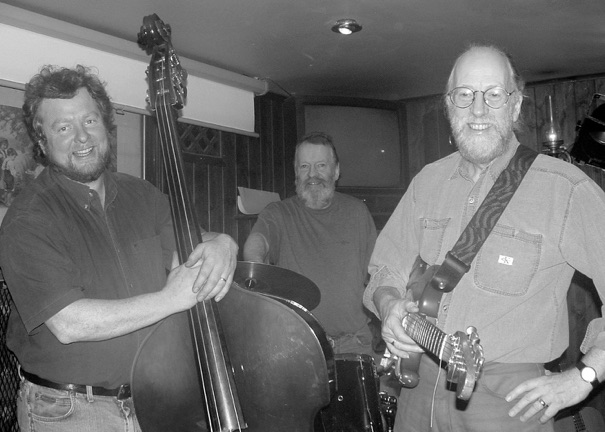
“Looking back, I think we were simply in the wrong place at the wrong time,” recalls Geraldine. “We were so far ahead of our time for Ireland.”
“We didn’t get the recognition at the time,” Paud agrees. “We were just too far ahead. But it’s been a fantastic musical journey – from the smallest seaside halls in Ireland to New York and Abu Dhabi. We’ve met so many different people, and we’ve had so many fantastic musicians in the band. We were so lucky to get that chance. It’s been a privilege, really.”
Now the privilege is all yours – as you enjoy this comprehensive collection of the band’s work up to the end of the eighties, including the first three albums with their original running orders and artwork, all the non-LP singles and B-sides and numerous thrilling unreleased studio and live performances.
